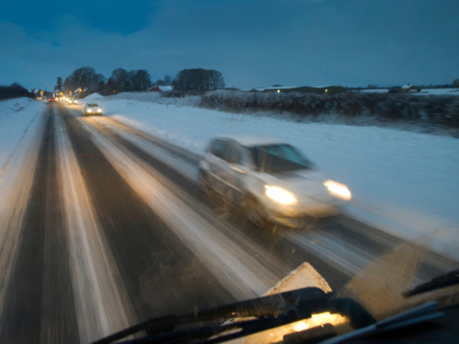Mastering the Whiteout: 10 Essential Snow Driving Tips
With some preparation and extra care, you can drive safely in snowy conditions in the UK. Here are 10 essential tips to follow
Driving in the snow can be challenging for even the most experienced drivers. The roads become slippery and visibility is reduced, making it harder to control your vehicle.
The driving environment can change rapidly from clear roads one minute to blizzard whiteout conditions the next. Icy patches and snow drifts can appear without warning, leading to slippery surfaces, reduced visibility and increased stopping distances. This means a greater risk of losing control, sliding off the road or colliding with another vehicle that has lost control.
However, with some preparation and extra care, you can drive safely in snowy conditions in the UK. Here are 10 essential tips to follow:
- Check local weather and travel reports before setting off. Knowing what to expect will allow you to plan your journey accordingly and give yourself extra time. Be prepared to change your plans if the weather takes an unexpected turn.
- Clear snow and ice from your vehicle thoroughly before driving. Make sure to clear all windows, mirrors, lights, the roof, bonnet and boot. Good visibility and lighting are key to safe driving. De-icing sprays and manual scrapers can speed up the process.
- Slow down and leave plenty of space between you and the vehicle in front. It takes much longer to stop in snow and ice. Leave at least three times more space than usual between you and the next car. Reduce your speed further on bends, hills and areas prone to icing over.
- Avoid sudden braking or acceleration. Both can cause skidding on slippery surfaces. Drive slowly and steadily, easing off the controls. If you do start to skid, take your foot off the pedals until you regain grip.
- Only use the highest gear possible to avoid wheel spin. Pull away slowly and change up gears smoothly. Taking corners gently in higher gears will also reduce the chances of sliding sideways.
- Watch out for black ice. This nearly invisible ice film on roads can catch drivers unaware. Pay attention to road surfaces and any areas that haven’t been gritted. Listen for approaching traffic sliding.
- Ensure tyres have plenty of tread and are properly inflated. The legal limit is 1.6mm but experts recommend at least 3mm for winter traction. Check pressures frequently as the cold causes them to lose pressure.
- Carry an emergency kit. Snow essentials include de-icer, scraper, torch, warm clothes, high visibility vest, boots, food/drink, jump leads, shovel, road map, first aid kit and a mobile phone charger/power bank.
- Take extra caution driving over hills. To avoid getting stranded, build up momentum before reaching an incline. Try not to stop part way up. If you do get stuck, move to a safe spot and call for help. Don’t attempt to turn around.
- Pull over if conditions worsen. Find a safe place to stop if visibility drops significantly. Put on your hazard lights and leave your vehicle only if you can find safety nearby. Call emergency services if you become stranded. Waiting with your vehicle gives you shelter and makes you easier to locate.
Following these key tips will help you stay safe on snowy UK roads. Always adjust your driving to the conditions, leave extra time for journeys and avoid driving altogether in extreme snow or ice. Remaining alert and vigilant is critical during challenging winter driving. With caution and preparation, you can deal with whatever weather comes your way.
The UK lacks extensive experience and resources to manage winter weather events compared to countries that regularly experience heavy snow. This is why drivers must adjust their speed according to the conditions, leave ample room between vehicles, and avoid unnecessary travel during storms. Remaining alert and vigilant behind the wheel makes all the difference in staying safe and avoiding accidents when driving in the snow in the UK.

